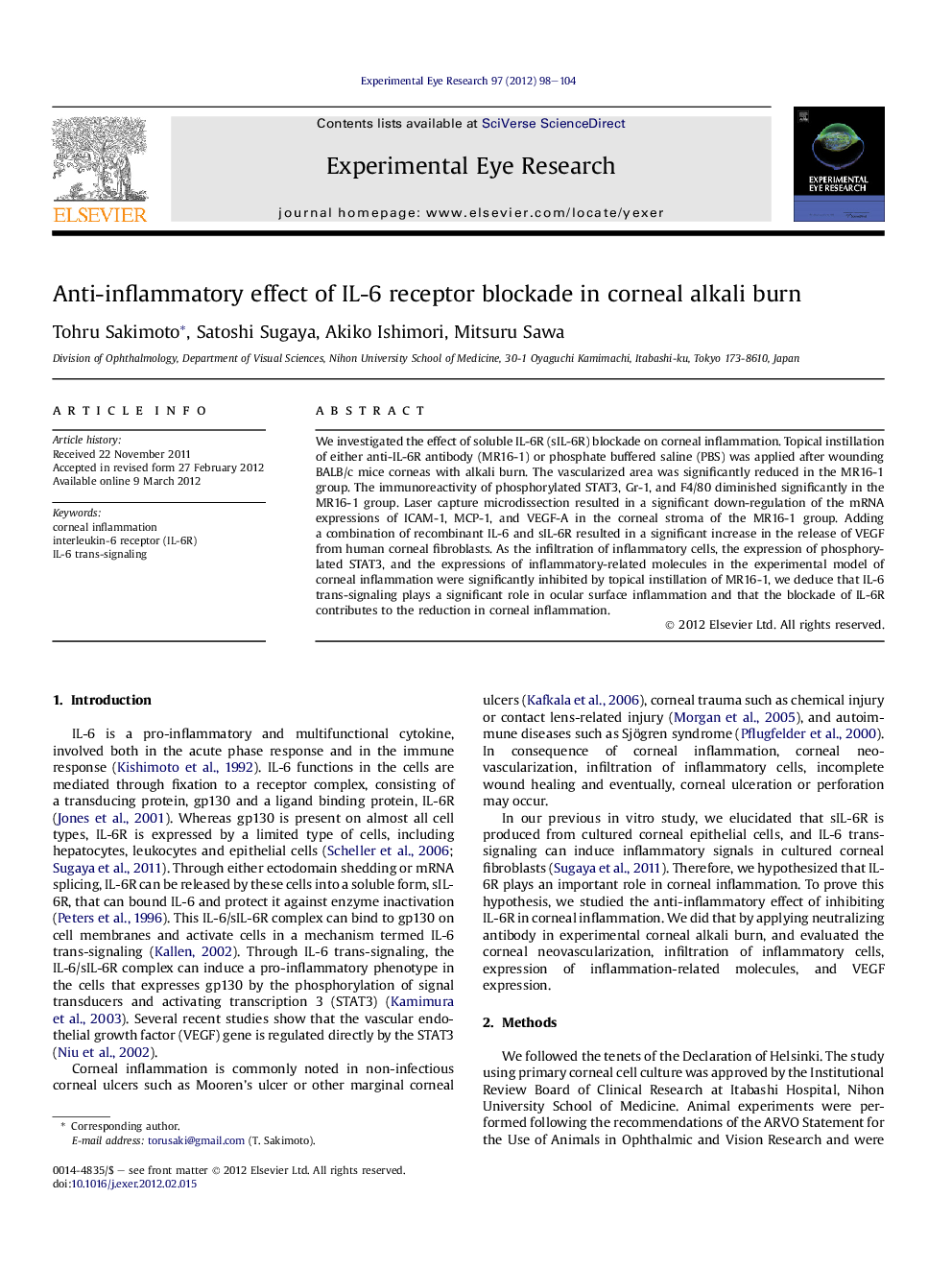| Article ID | Journal | Published Year | Pages | File Type |
|---|---|---|---|---|
| 6197374 | Experimental Eye Research | 2012 | 7 Pages |
We investigated the effect of soluble IL-6R (sIL-6R) blockade on corneal inflammation. Topical instillation of either anti-IL-6R antibody (MR16-1) or phosphate buffered saline (PBS) was applied after wounding BALB/c mice corneas with alkali burn. The vascularized area was significantly reduced in the MR16-1 group. The immunoreactivity of phosphorylated STAT3, Gr-1, and F4/80 diminished significantly in the MR16-1 group. Laser capture microdissection resulted in a significant down-regulation of the mRNA expressions of ICAM-1, MCP-1, and VEGF-A in the corneal stroma of the MR16-1 group. Adding a combination of recombinant IL-6 and sIL-6R resulted in a significant increase in the release of VEGF from human corneal fibroblasts. As the infiltration of inflammatory cells, the expression of phosphorylated STAT3, and the expressions of inflammatory-related molecules in the experimental model of corneal inflammation were significantly inhibited by topical instillation of MR16-1, we deduce that IL-6 trans-signaling plays a significant role in ocular surface inflammation and that the blockade of IL-6R contributes to the reduction in corneal inflammation.
⺠Topical instillation of anti-IL-6R antibody inhibited corneal neovascularization. ⺠MCP-1, ICAM-1, VEGF-A, and phosphorylation of STAT3 were also down-regulated. ⺠IL-6 trans-signaling induced VEGF upregulation in corneal fibroblast. ⺠Blockade of IL-6R reduced corneal inflammation and neovascularization.
